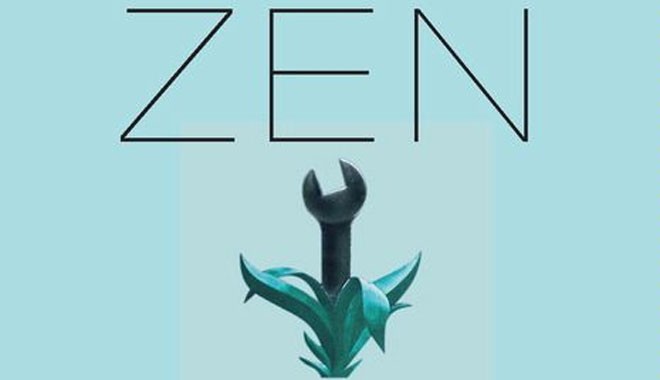
On why Robert Pirsig, who died last week, must be read with a pinch of salt

There comes a time in life, usually in your youth, when you are impressed by self-help books. The books that tell you how to get rich, how to prioritise your choices, and how changing a few habits may change your life. Some are written by management gurus and others by pseudointellectuals. Then you have books that come from university teachers whose degrees and academic credentials lend more weight to their arguments. Finally, there is a brand of spiritualism blended with everyday anecdotes and philosophical musings that capture young minds -- and sometimes even old ones -- and sell in millions.
If you read Zen and the Art of Motorcycle Maintenance by Robert Pirsig in your youth, you are bound to be impressed. But if you keep reading other goodness and get back to Motorcycle Maintenance after 10 or 20 years, you are bound to find it shallow and full of overbearing verbosity. Pirsig died last week, on April 24 in Maine, USA, aged 88. He was an American writer with a philosophical mind and wrote two books that became bestsellers. His writing is difficult to classify into neat categories of fiction or non-fiction.
The first book, Zen and the Art of Motorcycle Maintenance, published in 1974, uses a long motorcycle trip to explore the world of ideas. The writer muses about life, and tries to tell us how best to live it. Like many other books before and after it -- the book references perspectives from Western and Eastern civilisations. What distinguishes Pirsig from other writers is his focus on how to pursue technology, and this focus made him dear to millions of readers who were struggling to find a meaning to their lives in a fast-changing world of technology in the late 20th century.
While other writers bemoaned technological advances as degradation of life, Pirsig promoted technology to enrich human life, and that’s where his greatest attraction even to the readers in the 21st century lies. The first-person narration gives trip details parallel with retrospective events from the narrator’s past. Pirsig is able to create rich symbolism with analogies to explain why we exist. As we know, such analogies are a favourite staple of callow minds; most scriptures and holy books revolve around such analogies and parables that have enchanted the public for centuries. Pirsig uses his son as a permanent interlocutor to keep the audience engaged in conversation.
In addition, there is a couple riding another bike for the first half of the book. This couple is presented to be uncomfortable with technology as opposed to the narrator who is at ease with all things new and complicated. The couple feels oppressed by technology but uses it anyway. Half way through, the couple returns home but the father and son continue in the mountains and explore the inner world of spiritual development. If this sounds familiar, you may recall some of our own writers in Urdu who have written reams on spiritual awakenings.
While travelling, the narrator observes life through the eyes of a showy character, called Phaedrus, surrounded by mystery. Towards the end Phaedrus turns out to be the same as the narrator representing his life before he had a nervous breakdown and underwent psychiatric procedures. Finally, a search for spiritual meaning in a technological age leads the reader to a channel uniting all the distinct currents.
After over 400 pages the book resolves the various tensions; the narrator embraces his past and develops a personality capable of facing life with optimism. Philosophically, the book teaches how to spiritualise and integrate a scientific outlook with humanism for right living.
One wishes it was that simple.
Seventeen years after the publication of his first book, Pirsig wrote another lengthy investigation of how we can live well and rightly. The book with an intriguing title Lila: An Inquiry into Morals presents Phaedrus as narrator who is sailing down the Hudson River and meets a sexually charged and psychologically unstable woman called Lila. The books spins into a rigmarole of terms such as "culture of one", "metaphysics of quality", "conflicts of values", and then proceeds into a hierarchy of four evolutionary realms i.e. biological, intellectual, natural, and social.
Lila’s fate is left unresolved but Pirsig’s philosophical explorations continue to impress the readers.
If millions of readers bought his books and got impressed by them, you ask, why one should suspect and doubt Pirsig’s integrity? And if his philosophy is not good -- as this writer thinks -- then why does he deserve even this discussion? Well, nobody is questioning Pirsig’s integrity; what he did was probably in good faith. Among all the Babas, Carnegies, Coelhos, Hills, Muftis, and Shahs, Pirsig is probably slightly better. The problem is with the sheer shallowness of this kind of narrative that most people don’t realise at the first reading.
He deserves a discussion because this kind of spirituality needs debunking to prevent young minds from being influenced by it. The readers need to understand that any self-help book with philosophical and psychological pretensions is to be read with a pinch of salt, if at all.
Such books mostly follow an apolitical narrative that detaches the reader from broader sociological issues. They mostly don’t talk about the inherent disparities in societies and how they can only be corrected with political struggle rather than introspection and pseudo psychological and philosophical masturbation or self-indulgence.